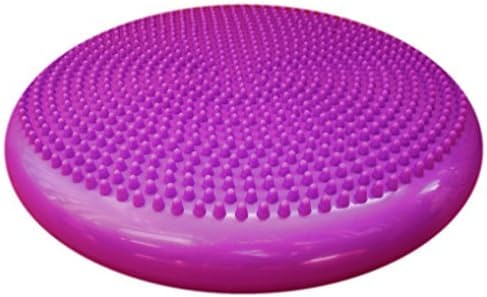Wiggle Seats- How Do I Choose Which One?!
- mikelynot
- Oct 11, 2022
- 3 min read
“Wobble cushion” and “wiggle seat” are not only fun words, they are extremely productive in increasing your child’s core strength and balance skills…AND attention while seated. These powerful tools are simple and affordable, and can help with:
Poor attention
Increasing length of time your child is able to sit
Improving core strength and postural control
Developing a better sense of balance
A wobble cushion or wiggle seat is referred to an inflated cushion usually in the shape of a disk, and often covered in a bumpy texture. They can help children with known sensory difficulties, often including children with a diagnosis of Autism, ADHD, and Sensory Processing Disorder (SPD). What these children typically have in common is difficulties sitting still, attention challenges, low core strength, and difficulty balancing - noting increased challenges with mealtimes at home, and attention to seated tasks at school. However, a lot of children could benefit from sitting on a wiggle seat, not just those with specific diagnosis,
Wiggle seats aren’t a stable surface like a normal chair, but they aren’t too unstable that a child could fall off or lose their balance, the way some children might if sitting on an exercise ball, for example. Wiggle seats give just enough wobble and wiggle to keep kids moving while seated to help with focusing, and is much less distracting to their peers around them. The movement gives the child vestibular input and proprioceptive input, both of which can be very calming and meet the needs of sensory seekers. In addition, the textured wiggle seats give tactile input (i.e. touch input). Tactile input can be alerting, calming, or overestimating, depending on the child…some children that are tactile sensitive may prefer a smooth wobble cushion to sit on.
Using a wiggle seat is simple - all you have to do is sit it under your child, either on the floor or on their chair. You never want to force a child to sit on it, as it may make them feel uncomfortable or unsteady because of poor balance and/or core strength. However, majority of children like AND prefer them! You can use a wiggle seat basically anytime your child is sitting, but there are some times during the day that it may be particularly helpful:
During meals while seated at the table
At their desk or table at school
Story time at the library or in the classroom
Completing homework
Working on arts and craft projects
In the car (*for children who are NO longer in a car/booster seat)
Playing board games
Building puzzles
Anytime! Simply for sensory stimulation or as part of your child’s sensory diet
Most of the time, children respond better to sitting on it for 20-40 minute increments, as the change of pace can be refreshing. However, some children love to sit on it often throughout the day.

If you’re interested in trialing a wiggle seat for your child, here are some options to search for:
Spiky wiggle seat
This provides proprioceptive, vestibular, and deep tactile input with the spiky texture this seat has. This is a good option for sensory seeking children who prefer deep tactile (touch) input.
Bumpy wiggle cushion
Quite similar to the wiggle seat mentioned above, however this cushion has much smaller, barely detectable bumps on it. Perfect for the children who don’t like the spiky texture.
Wobble cushion with gel
Offering a totally smooth surface and a different feeling when sat upon, your child may prefer the “squishier” texture of this seat filled with gel instead of air.
Two sided wiggle seat
Not sure which type of cushion your child will like best? This one has a textured side with rounded spikes, and the opposite side has smooth bumps
Wiggle wedge cushion
This is different than the classic seat because it is shaped like a wedge - designed specifically for improving core strength if this is your primary goal for your child
Links for the above pictured wiggle seats:
For additional support, call the clinic and schedule an evaluation with one of our therapists!
Blog written by: Mikelyn Schneiss, MS, OTR/L





















